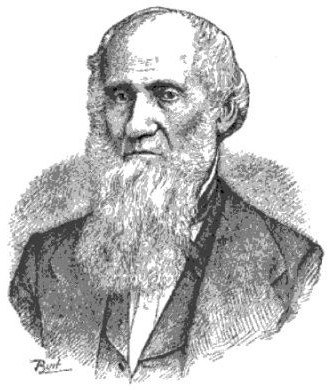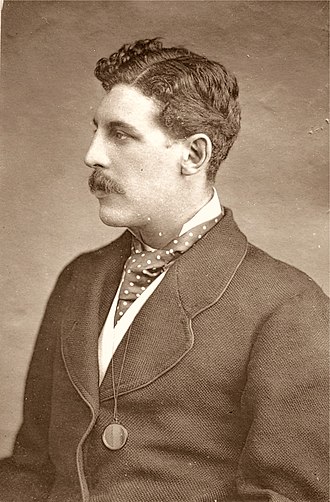Discover Your Roots
SIGN UPDiscover Your Roots
SIGN UPSquire is a gender-neutral English name that means "Knight's Aide." In the Middle Ages, a squire was the assistant to a knight, responsible for maintaining the knight's armor, caring for the knight's horse, and assisting in battle. The term "Squire" is derived from the Anglo-French word "esquier," meaning "shield bearer." Young boys would become squires at the age of 14, serving as attendants and training to become knights. While some squires were of low rank and owned manors, others were hired servants. The role of a squire evolved over time, eventually encompassing a broad social class just below the rank of a knight. The name Squire reflects a history of service, training, and honor.

Squire Maugridge Boone Jr. was an American frontiersman and the younger brother of Daniel Boone. Born on October 5, 1744, in Berks County, Pennsylvania, to Squire Boone Sr. and Sarah Jarman Morgan, Squire Boone Jr. grew up in the Yadkin Valley of North Carolina. In 1765, he married Jane Van Cleave, and the couple had five children. Squire Boone played a significant role in the settlement of Kentucky, accompanying his brother Daniel in blazing the Wilderness Road and assisting in the establishment of Boone's Station. In 1780, Squire Boone founded the first permanent settlement in Shelby County, Kentucky, known as Squire Boone's Station. Despite being wounded and losing his property in subsequent years, he continued his endeavors, serving in the Virginia legislature and later settling in Harrison County, Indiana. Squire Boone was deeply connected to the land and community, carving a home from a nearby hill, building Old Goshen Church, and becoming a leading citizen involved in local politics.Squire Boone passed away on August 5, 1815, at the age of 70, and was buried in a cave on his property in Harrison County, Indiana, as per his request. His legacy and contributions to the development of the American frontier continue to be remembered and honored.

Squire Enos Parsons Jr. is a renowned Southern Gospel singer and songwriter, born on April 4, 1948, in Newton, West Virginia. His father, a choir director and deacon, introduced him to music, teaching him to sing using shaped notes. Parsons holds a Bachelor of Science in music from West Virginia University Institute of Technology and started his career as a music director at various churches and a teacher at Hannan High School. In 1975, he joined the Kingsmen Quartet as a baritone. Some of his popular compositions include "The Master of the Sea," "I Call it Home," and "Sweet Beulah Land." Parsons has won several awards, including the Singing News Fan Award for Favorite Songwriter and Favorite Male Singer. Moreover, his songs have been recorded by numerous artists. Parsons announced his retirement from touring in April 2019 due to declining health. He continues to make public appearances at churches across the country. With an extensive discography and a significant impact on Southern Gospel music, Parsons' contributions to the genre are celebrated and enduring.

Squire Whipple (1804-1888) was an influential American civil engineer known as the father of iron bridge building in America. Born in Hardwick, Massachusetts, he later moved to New York where he received his education. Whipple's pioneering work in bridge design and construction left a significant mark on American engineering. His patented designs were implemented in numerous bridges, including the Whipple Cast and Wrought Iron Bowstring Truss Bridge in Albany, New York, and the Shaw Bridge in its original location, both of which are considered historically important structures. Whipple was also a prolific author, with notable works such as "A Work on Bridge-Building" and "An elementary and practical treatise on bridge building." His legacy continues to be celebrated in the field of civil engineering for his contributions to bridge architecture and technology. Whipple passed away in 1888 and was laid to rest in Albany Rural Cemetery, New York. His impact on bridge engineering and design remains a significant part of American engineering history.

Sir Squire Bancroft, born Squire White Butterfield, was a renowned English actor-manager known for his influence on the development of the English stage. Together with his wife Effie Bancroft, they are credited with introducing a new form of drama known as 'drawing-room comedy' or 'cup and saucer drama', characterized by its realistic stage sets. Bancroft's career began in the provinces, and he made his London debut in 1865 at the Prince of Wales's Theatre. After marrying Effie Wilton, the couple became joint managers of the theatre, producing and starring in Thomas William Robertson comedies, which revolutionized the English stage. They also popularized the "box set" and elevated the audience experience by redesigning the theatre to cater to a more upscale crowd. In the 1870s and 1880s, Bancroft continued to play leading roles and produced or starred in various contemporary and classic plays. Their influence extended to literature, as Bancroft authored two books and co-wrote two volumes of reminiscences with his wife. He was knighted in 1897 and continued to act until 1918. Sir Squire Bancroft and Effie Bancroft are buried in Brompton Cemetery, leaving a lasting legacy in the world of theater.

Squire is a name shared by various notable individuals across different fields and periods of history. Some of the prominent figures with the surname include Edward Squire, an English scrivener and sailor who was allegedly involved in a conspiracy against Queen Elizabeth I, and J. C. Squire, a British poet and historian. Additionally, there are modern-day personalities like Aurin Squire, an American producer, playwright, and screenwriter, and Larry Squire, a renowned American psychologist. On the other hand, Squire Bancroft, an English actor and manager, and Squire Whipple, a civil engineer considered the father of iron bridge building in America, are some of the well-known individuals with Squire as their given name. Whether in the realms of politics, entertainment, sports, or academia, the diverse array of Squires has left their mark on history and continue to inspire and influence in their respective fields.
All images displayed on this page are sourced from Wikipedia or Wikimedia Commons.We use these images under their respective Creative Commons or public domain licenses. Wherever applicable, author attributions and license information are provided. If you believe an image is used incorrectly or outside its license terms, please contact us so that we can review and correct the issue.